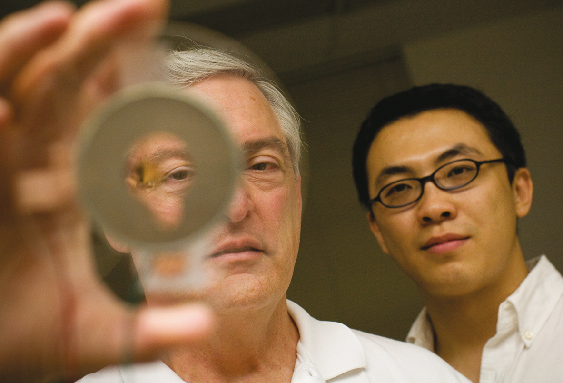Fil Bartoli and Qiaoqiang Gan have taken a significant step towards overcoming the limitations of photonic devices by designing a plasmonic surfacewave splitter.
Surface plasmons are interactions in which light creates oscillations of charges in metal structures. The new splitter separates light of two different wavelengths, sending them in opposite directions along the surface of a device. By splitting the wavelength, Bartoli and Gan have shown that optoelectronic integrated circuits, or “lights-on-a-chip,” can be developed.
“We are starting to see plasmonic structures that exhibit the predicted optical effects,” says Bartoli, the Chandler Weaver Chair of electrical and computer engineering. “We want to use these structures for bioengineering studies. We’re working with other departments to use light-on-a-chip to explore processes in cells and biomolecules.”
Bartoli and Gan, a Ph.D. candidate, hope to achieve advances in biosensors. Commercially available biosensors can detect changes in cells, but they have their limits. Biophotonics has the potential to put even smaller sensors on a chip, which would enable biologists to examine nerve cells over a longer period of time, or many cells at once. This could lead to a better understanding of Alzheimer’s, Parkinson’s and other nerve diseases.
Potential applications in photonics, the technological heir apparent to electronics that power computers, TVs and cell phones, stagger the imagination, Bartoli says.
Optical fibers already span the globe, carrying voice and data. But the optical fiber carrying light signals has a diffraction limit: Its width must equal at least half the wavelength of the light waves inside the material. Optical chips today have wavelengths of about 1,500 nanometers, roughly 15 times larger than the smallest electronic devices currently in use. This hurdle must be overcome before photonics can replace electronic circuits in microprocessors and other computer chips.
When that goal is reached, says Bartoli, information can be delivered over the Internet at three orders of magnitude greater capacity, making a profound difference in health care, bioscience and everyday life.

